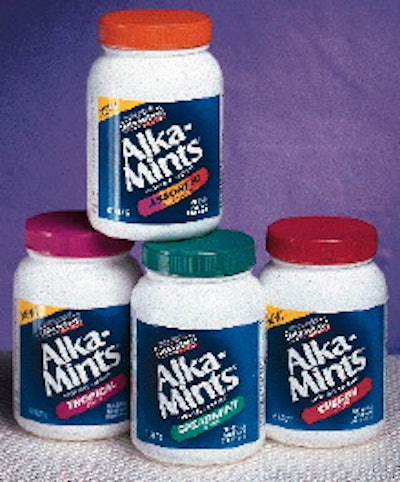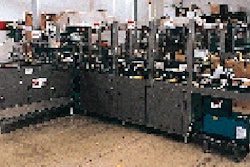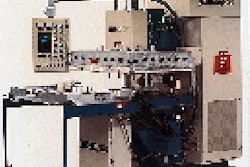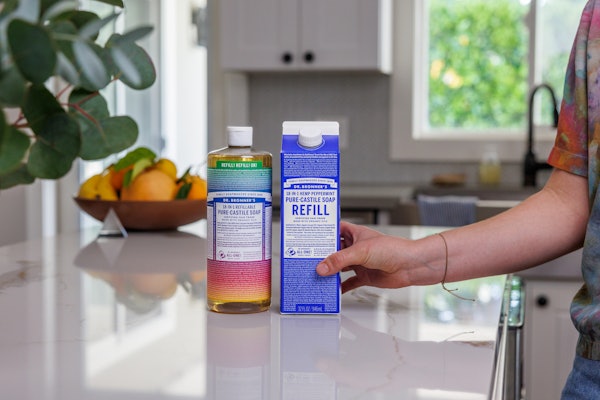An imminent U.S. Food and Drug Administration final rule on cut drug labels is apt to draw blood from pharmaceutical packagers. The final rule, now going through internal review on its way up the Clinton administration chain of approval, will fall far short of what the Nonprescription Drug Manufacturers Association (NDMA) has been pleading for. Unless the FDA's staff gets shot down by political types in the administration, drug companies will have to substitute expensive machine vision systems for the eyesight-based color verification systems now widely used to insure correct labels on shelf packs and unit package cartons. The other verification option will be to set up a separate packaging line for every iteration of every product. "I hope this final rule gets lost," says John Addison, vice president of quality control and technical services for Schering-Plough HealthCare Products. "We'd like to keep things the way they are now." Here is the quick background. In 1993, the FDA issued a final rule on good manufacturing practices for drugs. One provision established three verification methods that a drug company could use to insure that the correct label got on the correct drug package. Then two citizen petitions were filed in the wake of the rule requesting the FDA to consider other controls. FDA then stayed the compliance date for some "cut labeling" controls. These included labels on shippers (also referred to as shelf packs) and unit package cartons, where the cut label is actually the copy on the carton. That stay did not include cut labels put on the immediate product container. They have been subject to the verification procedures since 1993. Three procedures Of the three verification options, the one most companies would have to use is automated machine vision. An unlikely second option is using a packaging line for only one product size and strength. Then visual inspection is okay. But very few companies can afford a packaging line reserved for only one product. Visual inspection is also acceptable when product labels are applied by hand. But there have to be two sets of eyes doing the checking. That last option is likely to be used only for some veterinary products. In the wake of the stay, the FDA began to consider what other kinds of cut labeling would be subject to those three verification methods, and whether there might be some other means of verifying that products had the correct labeling. These two issues will be decided in the upcoming final rule. Paul Motise, a consumer safety officer in the FDA office of compliance, says he hopes the final rule will be out by the end of 1996. Motise says the final rule will subject two other kinds of packaging to the label verification requirements. Those would be the unit package carton and the shelf pack. A shelf pack containing a number of boxed aspirin bottles (with labels on the bottle), for example, would be exempt. So would the package inserts that go into some boxed drug bottles, both prescription and over the counter. Groups push for visual In addition, the FDA will allow a fourth method of verification: A company can use an automated system to differentiate products by size, shape or color. But Bill Bradley, director of technical affairs for the NDMA, says his group had been pushing hard for visual, not automated, verification by color, size and shape. And Bradley explains that he thought the FDA would exempt shelf packs, regardless of whether the bottles in them were boxed or not. The Pantone Matching System is widely used for package validation by color. The NDMA's Bradley argues that there are relatively few FDA drug recalls because of label "mix-ups," that is, the label for product A is accidently applied to product B. Therefore, he explains, visual verification of labels by color is working, and is a current good manufacturing practice. Schering-Plough developed the relatively new Pantone system because of the FDA's complaint that there previously was no means of "adequate" color verification. "We have been using verification by color, size and shape for 30 years," says Schering-Plough's Addison. "We have never had a recall because of label mix-up." At Schering-Plough, even packages of products within the same family whose only difference is flavor come in different packages, such as Di-Gel. "You can differentiate them half a block away," says Addison. "To think someone wouldn't see something as dramatic as a wrong colored package is unfounded." The FDA's Motise agrees that label mix-ups are infrequent. "But they still occur," he adds. But he concedes, "If there had been all kinds of problems biting us on the nose, we would have written a much tougher final rule." c
























